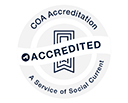Human Trafficking of Children
What is human trafficking?
Federal law defines trafficking in persons as: “sex trafficking in which a commercial sex act is induced by force, fraud or coercion, or in which the person induced to perform such act has not attained 18 years of age; or the recruitment, harboring, transportation, provision or obtaining of a person for labor or services, through the use of force, fraud or coercion for the purpose of subjection to involuntary servitude, peonage, debt bondage or slavery.” [U.S.C. §7102 (8)]
Sex trafficking occurs when a child under the age of 18 is involved in a commercial sex act, including prostitution, sexually explicit performance or production of pornography in exchange for something of value (money, food, clothing, shelter, drugs, alcohol, etc.).
Labor trafficking is the exploitation of a person for labor or services through force, fraud or coercion. Labor trafficking victims are often forced into domestic servitude, agricultural work, restaurant work or factory work.
One in three teens will be recruited by a pimp within 48 to 72 hours of running away from home. The average of age entry into prostitution is 12-14 years old.
Human trafficking victims are:
Targeted
Pimps/traffickers are predators who seek out vulnerable victims, particularly runaways or children experiencing trouble at home. Pimps find victims in places like social-networking websites, shopping malls, schools, group homes, shelters, bus or train stations and on the streets.
Tricked
Pimps/traffickers will create a seemingly loving and caring relationship with their victim to establish trust and loyalty. Pimps/traffickers will invest a great deal of time and effort in their victim, buying him or her gifts, providing a place to stay or promising a loving relationship. Victims often view their pimp as a caretaker or boyfriend/girlfriend.
Traumatized
A pimp’s/trafficker’s use of psychological manipulation (causing the child to truly believe the pimp loves and cares for his or her well-being) coupled with physical control (threats, violence or drug addiction) can make a victim feel trapped and powerless.
What are potential indicators of trafficking and exploitation of a child?
The child may:
- Show signs of physical harm.
- Become depressed, fearful or withdrawn.
- Have a history of running away or currently be on run.
- Have expensive clothing, jewelry, manicures, pedicures, etc.
- Begin spending time with an older boyfriend or girlfriend.
- Be found in a hotel/motel.
- Have new tattoos or branding.
- Be performing work inappropriate for his or her age and/or is not being compensated for work performed.
- Become isolated from family, friends or sources of support.
- No longer have control of his or her driver’s license or other identification documents.
- Make reference to having a “pimp” or “daddy.”
You can help put an end to the buying and selling of our children.
If you suspect a child is a victim of human trafficking, call 911 and the DCFS Child Abuse and Neglect Hotline: 800-252-2873.
Need help or want to know more?
Please see these resources for additional information:
- Our Children are not for Sale brochure in English, en español or Polish (Polskie)
- Stop Human Trafficking, Know the Signs poster in English
- Minors are victims, not offenders poster in English and en español


